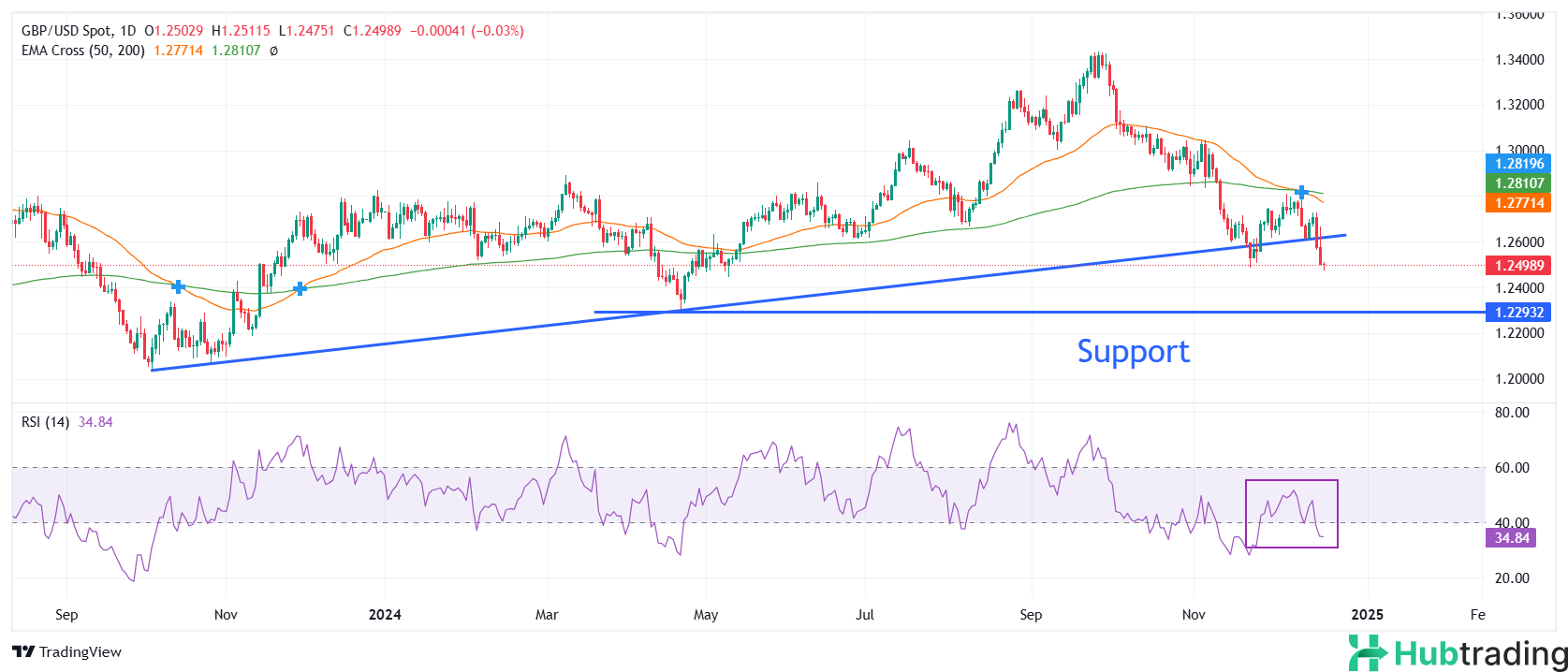- Pound Sterling faces pressure as UK Retail Sales for November came in weaker than expected.
- A higher number of Bank of England (BoE) officials voted for an interest rate cut, fueling dovish expectations for 2025.
- Investors are now awaiting the US PCE inflation data for November for new insights into the Federal Reserve’s interest rate outlook.
The Pound Sterling (GBP) weakened against its major peers on Friday following the release of the UK Retail Sales data for November, which showed slower-than-expected growth. Retail Sales rose by just 0.2% month-over-month, below the 0.5% forecast but a recovery from the 0.7% decline in October. Year-over-year, Retail Sales increased by 0.5%, missing the expected 0.8% and a sharp drop from the previous 2%, which was revised down from 2.4%. The report highlighted weak clothing demand, although sales in non-food stores saw a rise. The UK Office for National Statistics (ONS) noted that the Black Friday sale’s impact was not included, as it began on November 29, with the data covering the period from October 27 to November 23.
The outlook for the British currency is further clouded by the dovish stance at the Bank of England (BoE) monetary policy meeting on Thursday, where three policymakers voted for an interest rate cut, contrary to the one expected by the market. Despite leaving rates unchanged at 4.75%, BoE Governor Andrew Bailey refrained from committing to a specific rate cut timeline, citing the heightened uncertainty in the economy. As a result, traders are pricing in a 53 basis point interest rate reduction by the BoE in 2025.
Daily Digest Market Movers: Pound Sterling Hits Seven-Month Low Against US Dollar
- The Pound Sterling drops to a fresh seven-month low near 1.2470 against the US Dollar (USD) on Friday. The GBP/USD pair weakens as the US Dollar Index (DXY) reaches a two-year high near 108.50 but pulls back in European trading hours ahead of the release of the US Personal Consumption Expenditure (PCE) Price Index for November at 13:30 GMT.
- Investors are focused on PCE inflation data as Federal Reserve (Fed) officials express growing concerns over the slow progress in disinflation, outweighing worries about employment risks. Core PCE inflation, the Fed’s preferred gauge, is expected to rise by 2.9% year-over-year, up from 2.8% in October, with a month-over-month increase of 0.2% compared to 0.3% in October.
- The US Dollar outlook strengthens following the Fed’s recent policy meeting, where it lowered key borrowing rates by 25 basis points (bps) to the 4.25%-4.50% range as anticipated. However, the Fed also signaled a slower rate-cut path for 2025, with officials now forecasting the federal funds rate to decline to 3.9% by 2025, up from 3.4% in September.
- Fed officials have become more confident in strong economic growth, leading to caution regarding further policy easing. The third estimate for Q3 Gross Domestic Product (GDP) growth came in at 3.1%, up from the previous 2.8%.
Technical Analysis: Pound Sterling Breaks Below Upward-Sloping Trendline

The Pound Sterling weakens against the US Dollar, breaking decisively below the upward-sloping trendline around 1.2600, which has been in place since the October 2023 low of 1.2035. The formation of a death cross, with the 50-day and 200-day Exponential Moving Averages (EMAs) near 1.2790, signals a strong bearish trend in the longer term.
Additionally, the 14-day Relative Strength Index (RSI) falls below the 40.00 level, indicating that fresh downside momentum is underway.
Looking ahead, the pair is expected to find support near the April 22 low around 1.2300. On the upside, resistance is likely around the December 17 high of 1.2730.





